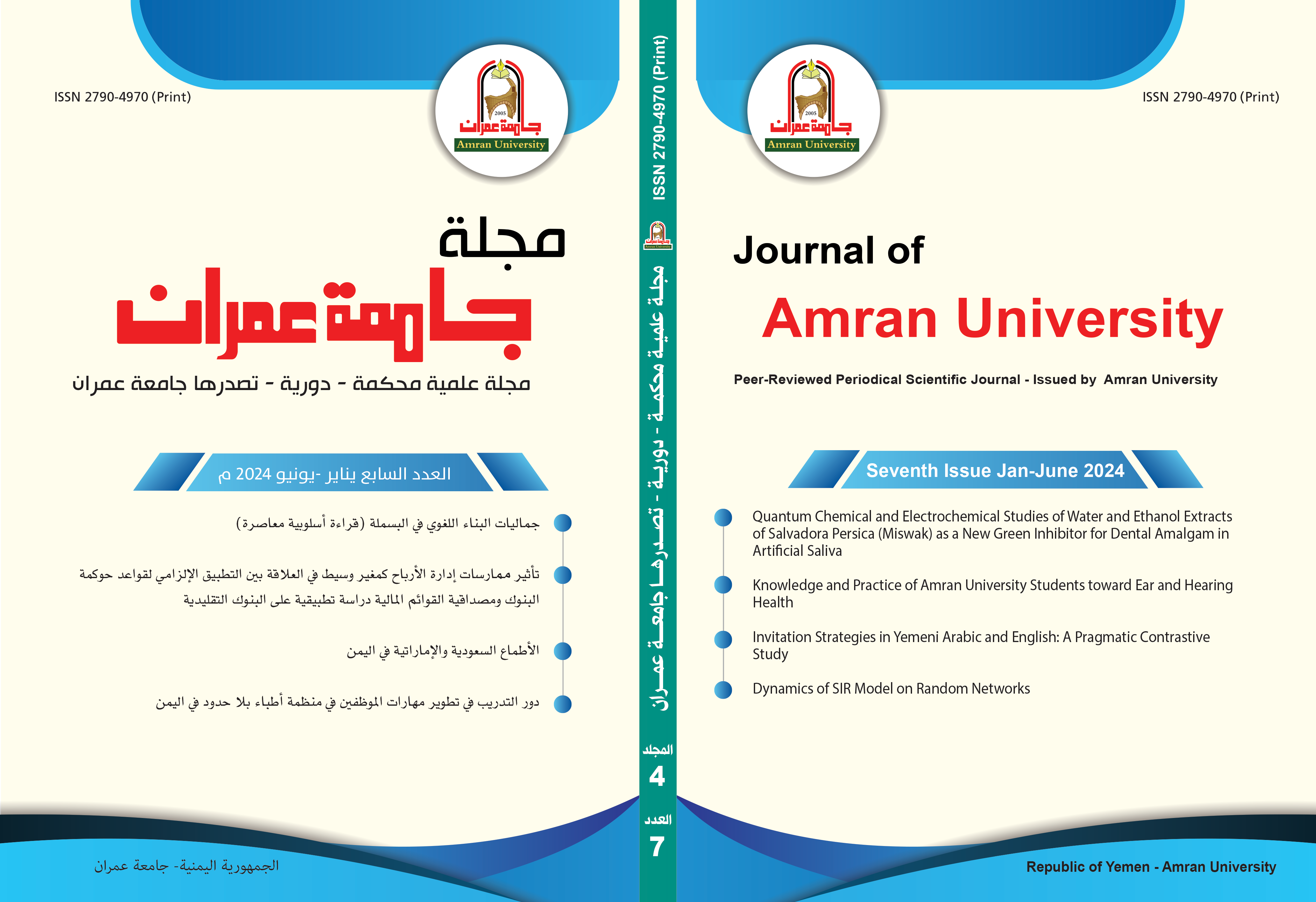Invitation Strategies in Yemeni Arabic and English: A Pragmatic Contrastive Study
DOI:
https://doi.org/10.59145/jaust.v4i7.90Keywords:
Invitation speech act, native speakers, pragmatic contrastive, politeness strategies, Yemeni ArabicAbstract
Abstract
The present study aims to examine the politeness strategies employed by Yemeni Arabic speakers and native English speakers in the speech act of invitation. The study seeks to explore and compare how these two communities produce invitations, specifically focusing on the utilization of politeness strategies. The sample for the study consisted of 330 Arabic native speakers who were students from different departments in three public Yemeni universities, as well as 20 native speakers of English representing four English-speaking countries: the USA, Britain, Australia, and South Africa. By analyzing the performance of these two language groups in producing invitations, the study aims to gain insights into the similarities and differences in politeness strategies employed in this particular speech act. The data collected through discourse completion task questionnaire (DCT) based on Blum-Kulka (1984) with some modifications. Each of the valid responses was analyzed separately to identify the type of strategies used. The findings revealed that the Interrogative invitations, conditionally hedged invitations, and invitations using performative verbs are the most common strategies employed by the native speakers of English. In Arabic, on the other hand, the most common strategies utilized by speakers are interrogative invitations, statement of personal desire, invitations using the performative verbs, Bald on record imperative strategies, obligatory/necessity statements, conditionally hedged invitations, and expressing pleasure.
Downloads
Published
How to Cite
Issue
Section
License

This work is licensed under a Creative Commons Attribution-NonCommercial-NoDerivatives 4.0 International License.

